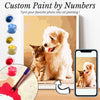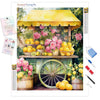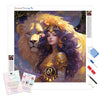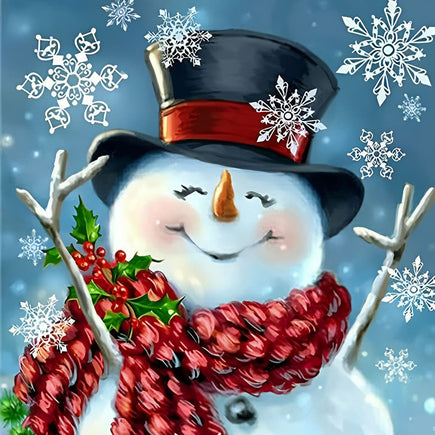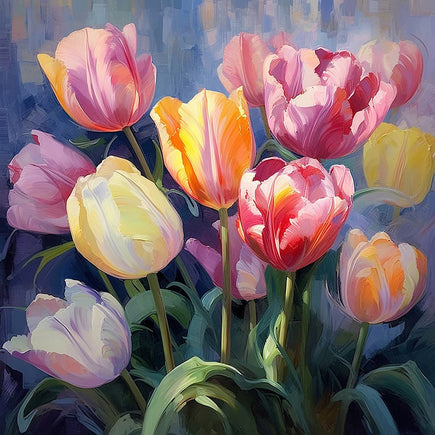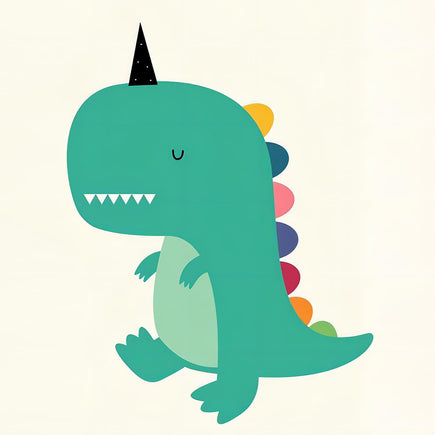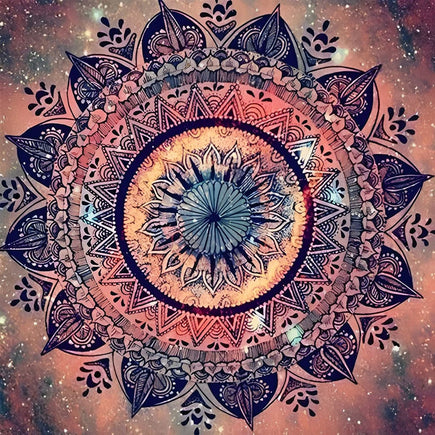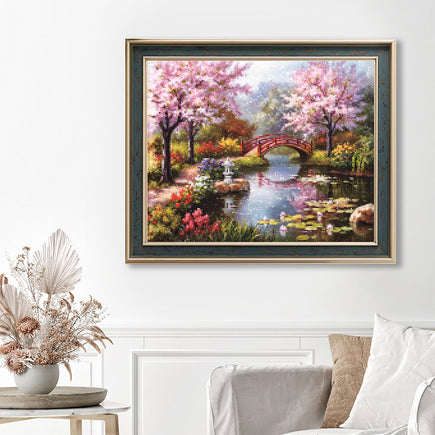Handy Tips on How to Fix Diamond Painting Mistakes

Diamond painting is an interesting combination of painting and craftsmanship that allows one to create breathtakingly beautiful, sparkling works of art. It is a fun and very therapeutic hobby, though it surely has its glitches. Mistakes happen with those just starting or even with long-time diamond painting pros. The good news? Fixing these mistakes is part of the learning process, and it can be done with a few simple techniques. In this tutorial, we go through common mistakes that are made when painting with diamonds and how to fix them, step by step, so you can continue making beautiful art!
Common Mistakes in Diamond Painting
Before diving into solutions, let's identify some of the most common mistakes you might encounter while working on your diamond art project first:
- Wrong Placement of Diamonds: One of the most frequent mistakes made is wrong placement. Sometimes this is because you might misread the symbols or get distracted while working.
- Missing or Fallen Diamonds: Occasionally, diamonds may fall off the canvas due to poor adhesion or an accidental bump, leaving unsightly gaps in your artwork.
- Color Confusion: With so many similar colors included in a diamond painting kit, it's quite easy to mix up the drills and end up giving an uneven or patchy effect.
- Unwanted Gaps: Leaving gaps between the diamonds will render the piece unfinished, taking away much of the beauty of the finished product.
As mentioned earlier, making mistakes is quite normal; knowing how to rectify them is the most important thing. Now let's look at some effective methods of fixing these common problems.
How to Take Diamonds Off
If you have placed diamonds incorrectly, don't panic! Here are several techniques about how to safely remove them without damaging your canvas.
1. Using a Craft Knife
Take a craft knife and carefully slide it under the diamond you want to remove. Make sure to apply only a small amount of pressure so that the diamond rises from the canvas, being very careful not to cut or scratch the fabric. After the diamond has been lifted, you can always set it aside or put back into your storage containers for later use
Tip: This works better for larger diamonds because one has to be extremely precise and avoid damaging the surrounding area.
2. Using Tweezers
Take a pair of fine-tipped tweezers and firmly grasp the diamond in them. Now rotate the diamond gently and pull upwards to take it off the canvas. Check to ensure that no tacky residue remains in the place before setting a new diamond there.

Tip: This method is preferred when working in tight spaces or when a little more finesse is required.
3. Heat Method
With the hairdryer set on low, gently heat up the diamond and adhesive. As it softens, it should be carefully lifted with a pair of tweezers. Clean any remaining residue on the canvas and reapply a new diamond.
Caution: Keep the heat at a reasonable distance to not damage the canvas.
4. Use a Needle
If you have needles, you can make good use of one to help dislodge any defiant diamonds. You simply insert the needle underneath the edge of the bit so that prying it open is usually much easier than with other tools.
Replacing Missing or Fallen Diamonds
Sometimes, diamonds may come off or get misplaced, and you are left with gaps in your work. Here is how you can go about filling those gaps effectively.
1. Reapplying Diamonds
If a diamond has come loose,check the canvas and inspect its adhesive condition. If it's still sticky, you can reapply the diamonds onto the canvas right away. If not, simply apply a small amount of diamond art adhesive onto the area where your diamond is missing. Then, using the applicator tool, carefully place the diamond back into place.
Tip: To help it stick even better, tap on top of the diamond lightly after placing.
2. Color Matching
If some replacement is needed and you don't have the exact color, find the closest one in your supplies. Always test the replacement diamond on some inconspicuous part of your canvas just to see how it will blend in. If the color is close enough, go on and fill the gaps as usual.
Making Changes to Your Design
Sometimes mistakes can lead to unique creative opportunities. Here's how to turn a mishap into a feature.
1. Embracing Imperfection
Look at the mistake and see if it can be designed into your work. Sometimes, a misplaced diamond gives it a surprise pop of color. Think of it as an opportunity to get creative instead of a mistake. You can add other diamonds in similar shades around them, which will give a blending effect. Take note of the changes you make so you can look back and appreciate how you adapted the piece—it's a wonderful opportunity for creative problem-solving and growth in your craft.
2. Adding Custom Elements
Consider decking your piece out in additional embellishments like rhinestones, pearls, or even Aurora Borealis diamond drills. Using mixed-media glue, attach your embellishment securely. You can try layering different textures and materials to achieve an even more dynamic artwork.
Tip: Custom elements are great for distracting attention from areas not exactly as they were supposed to turn out while adding your personal touch.
Prevention Tips: How to Avoid Mistakes in the Future
Though understanding how to correct mistakes is good, being able to prevent them from happening at all is even better. Here are some tips you may find helpful in error prevention on future projects:
- Organizing Drills: Use labeled containers or organizers for your diamond drills. This will save you much-needed time in identifying colors and also avoid mix-ups. Keep a reference chart handy that shows the colors and corresponding symbols for your diamond painting. This will keep you on track as you go.
- Use Good Lighting: Proper lighting will help view the symbols much better and try to avoid putting the wrong diamond in the particular setting. It is also advisable to work on light pads, allowing light to pass through the canvas from the bottom for maximum clarity.
- Work in Small Sections: Peel back the cover film in small sections. This is helpful because you may then focus on that particular small area, which again minimizes the possibility of making mistakes.
- Double-Checking Before Placing: Always double-check the symbols on the canvas against the color of the diamonds before placing them. Though it may be quite tedious, it saves lots of time correcting mistakes.
- Taking Breaks: Don't rush your diamond painting session. Continue taking breaks to stay concentrated and steer clear of every reckless mistake. If you work continuously for an hour or so, step away from your work for a couple of minutes, refreshing your eyes and mind. You will be able to return and will have a better vision of how you are progressing.

Building Confidence in Diamond Painting
Mistakes in diamond painting? Oh, they're bound to happen—but don‘t worry, they won’t ruin your fun! If you learn to fix some common mistakes and look at them as an opportunity for creativity, then this may just be your key to becoming a better artist and making even more stunning art. Remember, all artists make mistakes; it is how you deal with them that matters.
So don't be afraid to dive into your diamond art projects. As you practice, you not only learn to fix mistakes but also develop your style and confidence as an artist. Enjoy the process, and happy diamond painting!


